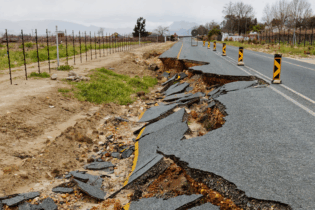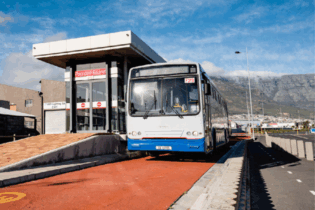The total number of non-tariff barriers affecting business within the Comesa, EAC and SADC regions is 566. Sixty of these are dealt with by Fesarta (Federation of East and Southern Africa Road Transport Associations),as these are only those that affect road transport.
Though Fesartaonly became involved in resolving non-tariff barriers in 2012, it has managed to resolve a few: the 40 km/h speed limit in the DRC has been lifting, the hijacking of trucks in the Tete Corridor is being dealt with, Mozambique now allows 56 t GCM and Tanzania no longer charges Kenyan trucks a US$200 (R1 767.52)entry fee. Fesarta also circulates a schedule, on a regular basis, showing which non-tariff barriers are prevalent in which regions and what is being done to solve the various issues. Simon Foulds spoke to members of Fesarta to ascertain what issues affect transport operations in Kenya, the DRC and South Africa. 1. What are the most common non- tariff barriers which affect your company moving freight through southern and eastern Africa? Jane Njeru, CEO of the Kenya Transport Association: “The most common non-tariff barriers are related to the management of border processes. The processes are characterised by numerous duplications of procedures. There is little, if any, cross-border cooperation between authorities of the various countries that our trucks transverse. Others barriers include corruption, mismanagement of weighbridges, toomany road blocks and excessive charges.” Lambert Tshisueka, a director at Hermis Transport Logistics,which operates a fleet of 140 Superlink trucks from the DRC: “In the DRC, high levels of corruption are seen as the norm asit happens blatantly. The procedures at the border aretaketoo long, whichresults in operators adopting the ‘system’ of corruption just to keep on moving.It always seems the long winding queues at border posts never end as the procedures and controls are just too much.” As an example, there are three main check points from the border of Kasumbalesa to Lubumbashi (Border, Whisky and Kisanga), giving the impression of three borders withina 90 km distance,and every truck has to pay fees at each check point. The toll fees are the highest in the region anda round trip to Kolwezi, 420 km from Kasumbalesa,can reach up to US$900. Thereare also too many controls on the roads, witha singlecheck point involvingas many as 10 to 12 government departments. Tshisueka adds: “In Zambia, the toll fees for trucks from the DRC are high. In addition, there are council levies thatare paid at every entry and exit point of Zambia.Zimbabwe has an environmental levy for any truck carrying unprocessed minerals, wood, etc. “Another issue of concern is that in the DRC, truck documentation (licence disks and roadworthy certificates)usually takes time to be issued and this is causing trucks to be penalised heavily for not having the correct paper work by the other countries’ traffic police. “ Gavin Kelly, technical director at the Road Freight Association, says: “The delays at borders arecaused by a myriad of authorities and rangefrom bad work ethic, bad processes, incompetent officials, bad IT systems, bad workflow processes, poor infrastructure, inadequate infrastructure, poor communication systems, lack of electricity, corrupt officials, contradicting legislation and processes, new processes implemented without training/warning, vehicle breakdowns, over-zealous inspections, bribery and corruption.” 2.How much extra do these non-tariff barriers add to your expenses and who ultimately pays for this? JN: “The non-tariff barriers make the cost of doing business twice as expensive because of the delays. The only way transporters make profits is by maximising on the turnarounds. The delays at the borders cause a trip that under normal circumstances should take two days to take three to four days. These extra costs are carried by the transporter and eat up the profit margins of their businesses.” LT:“These non-tariff barriers contribute to more than 50% of our expenses and at the end of the day these expenses are paid for by the end user.”GK: “It depends on the vehicle, cargo and contractual obligations (transporters lose money when the wheels are not turning, cargo owners charge demurrage, fines are incurred for delays, loss of returns loads, increase in salaries and out of town rates). In the end the consumer pays – it all trickles back to the consumer. The operator pays up-front and many times is put out of business.”
3.What have you been doing in your country to ensure these non-tariff barriers are no longer impediments toensuring your company delivers freight with no additional costs? JN: “There are progressive efforts towards solving the border issues. The implementation of one-stop border posts with formation of joint border committees is expected to enhance international cooperation. However, the implementation is rather slow and the full effects are yet to be felt. The implementation of the single window system by Kentrade is also expected to quicken the border processes by increasing efficiency in exchange of information. There have also been efforts towards public-private sector partnership.” LT: “As a transport association, we engaged various government departments that fall under our umbrella to tackle these issues, but nothing very significant gets resolved. Drivers had to close the border for some days just for some issues to be addressed. “ GK: “Lobbying with whoever is responsible for these issues – from government to organisations – and having a system set up with SADC. The problem is that there has been very little success in getting these barriers resolved as most of them have a financial aspect linked to them – somebody makes money. The only recourse left to operators is to take the issue up themselves (as done elsewhere in the world), which can be anything from amicable agreement to boycotting of certain countries or borders.” 4.In your view, is it possible to alleviate these non-tariff barriers in Africa, ensuring the flow of freight in Africa runs smoothly? JN: “It is possible to alleviate non-tariff barriers in Africa because manyhave been created by difficult government officials who render services with self-interests rather than the need to enhance trade in mind.” LT: “It is very possible to solve all these barriers if the SADC or COMESA pushes the different governments to harmonise all the customs procedures in the regions so that all the processes are standardised. The ministries of transport of the different countries should also harmonise and respect what they agree for corruption to disappear.” GK: “Yes – one day. The operators (from all countries) will need to stand together and refuse to accept the state of affairs. The structured process doesn’t seem to be working (currently).” 5.Are authorities in your country serious about tackling non-tariff barriers to ensure freight moves smoothly? JN: “There is commendable effort, but a lot is still left to be desired. The Kenyan government introduced weigh-in-motion (WIM) equipment, but it is rarely calibrated. Transporters experience a lot of variances in readings from one weighbridge to another as they traverse through the country. There are also plans to weigh cargo at two points only, the point of loading and exit, to curb unnecessary delays. However, this has yet to be implemented.” LT: “A lot has been said but no action has followed.” GK: “Definitely not the C-BRTA or the Department of Transport. Lots of lip-service is paid to this, but very little has been achieved. If this really is the case, then these authorities need to state that they cannot achieve anything, then disband and allow operators to solve the issues. In the end, supply and demand will prevail.”






